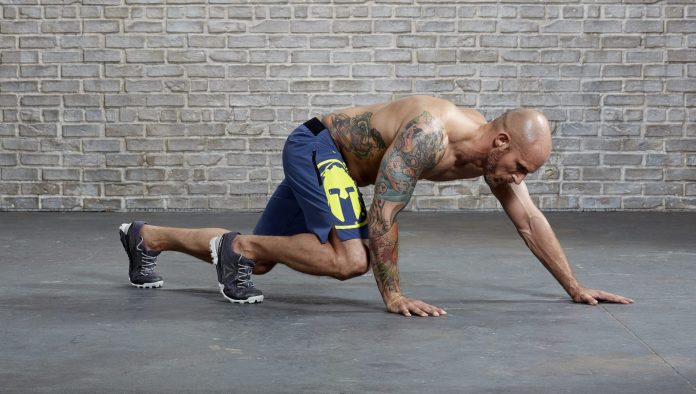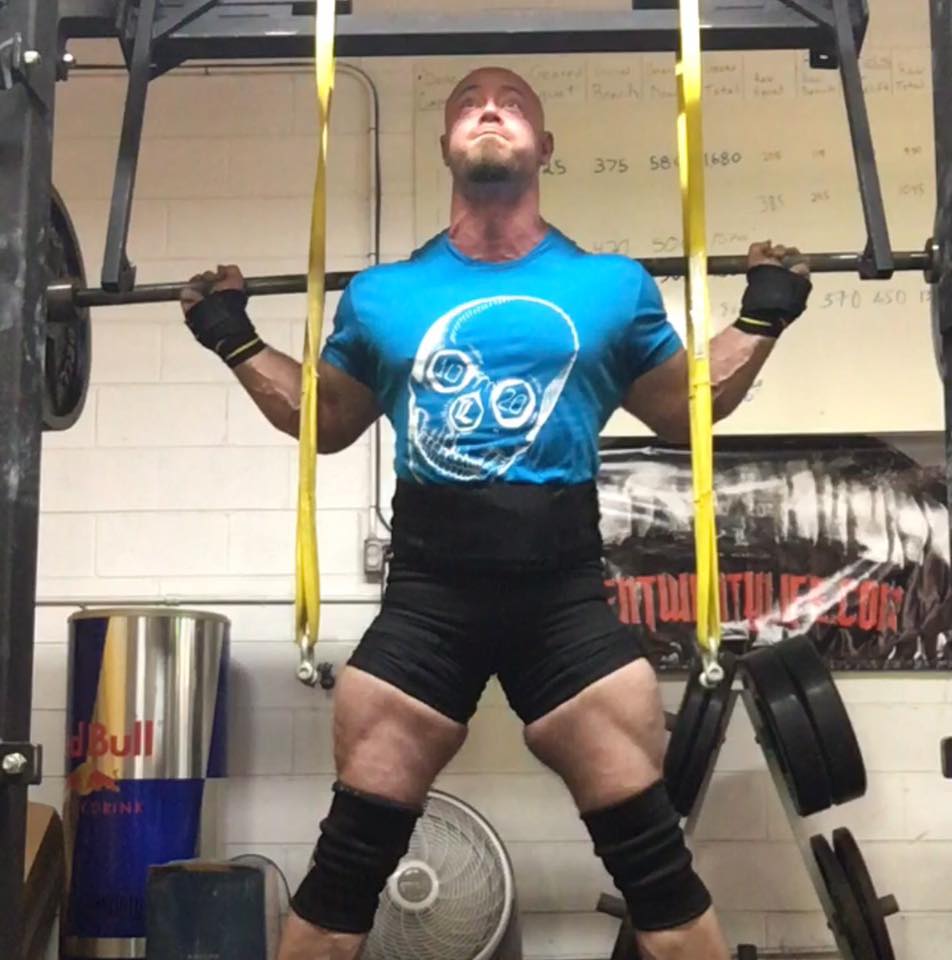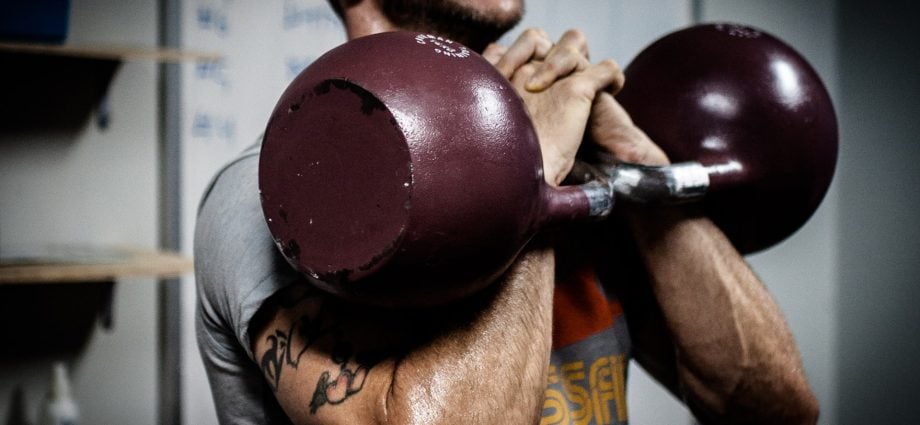
Brazilian Jiu-Jitsu is a very physically demanding sport. People only looking to get in shape often choose BJJ as an alternative to boring fitness routines. The fact of the matter is that rolling around gets people into shape fast. However, for those looking to get more out of it in training or competition, it gets more complicated. When you start being serious about the sport and/or are looking to compete, every roll is tough. Because you see, now you’re in an environment where everyone is in shape. Now, you need help in order to get your performance to the best of your abilities. Now, you need to start training conditioning for BJJ.
It’s often said that when two top-level grapplers are evenly matched, the outcome is decided by their physical conditioning. We’ve seen it time and time again. Both on the mat and in the MMA cage(s), a huge gas tank goes a long way to ensuring victory. BJJ conditioning is a huge part of the competitive puzzle and should be taken very seriously. Even those just rolling for fun need to do some conditioning for BJJ in order to improve. Consider it your homework, something you do off the mats but that needs to have carryover to your actual grappling performance.
Is Conditioning For BJJ Necessary?
There are different schools of thought on whether or not you should train conditioning for BJJ in a specific fashion. While it is true that rolling is irreplaceable as a conditioning tool that gets you ready for the demands of the sport, it is also true that it is far from enough. So, the claim that as long as you roll hard, you’ll do fine in competition is way off the mark. Your opponents won’t be counting on just their rolls to get them through tough exchanges and matches so why should you?
When you are tired everything seems harder. No matter how good you are at a leg lock or a choke when you’re tired all you can think about is how to breathe. Add in an opponent on top of you and it gets downright uncomfortable. A good gas tank makes all of the above bearable. A great gas tank makes you get through a tough roll ready for the next one.

That means further matches against experienced and potentially heavier opponents. A good conditioning program can lead to double medals. Gassing out won’t get our brown belt past his own weight division, let alone the absolute. The same, though, applies to white, blue, purple, and especially, black belts.
How Conditioning Works
Conditioning for BJJ might be simple, but only if you understand it. The thing is that the bottom line is that conditioning is still a form of physical training that is there to help you accomplish a goal. Once you understand how the body accomplishes that goal, you can figure out your favorite method of training, and set up a program to target those specific conditioning goals.
The body has three energy systems that help it break down nutrients and transform them into energy that the muscles and organs can use. These three systems are the anaerobic system, the anaerobic lactic system, and the anaerobic alactic system.
The aerobic system is an energy system that allows your body to work for really long periods of time (think marathon running) but at a very low output (think marathon runners’ speed, or better said, lack of it). This is actually a foundational energy system, and you simply have to have it in order to even think about doing any type of athletic competition. If you are lacking in this department (a good test is actually making it through a 5 mile run without spitting your lungs out) your conditioning for BJJ should start there.
The anaerobic lactic system is the system that will provide you with less energy time-wise, but that energy will be at a higher output, It means, you can do more and harder, but you won’t be able to keep it up as long as with the aerobic system. The reason for this is that this system works in an environment without oxygen, and uses lactic acid, which is a product of the aerobic system, as a source of energy, among other things. In terms of running, this is a 400-meter sprint.
Finally, the anaerobic alactic system is the one that will allow you to explode like an Iranian wrestler but only for a very short period of time, 10-20 seconds at most. The system is not easy to develop but is extremely important for Brazilian Jiu-Jitsu. Since I used a running example above, the anaerobic alactic system is the one that allows you to sprint at maximum capacity for about 100 yards or so. The system utilizes a compound called ATP, or rather the dissolvent of it, which is a process that releases a lot of energy., Conversely, creating as a supplement help increase the storage of products required to form ATP and hence, improves alactic conditioning.
Sports Specific BJJ Conditioning
It is clear that grapplers need to train to condition for BJJ. However, routines shouldn’t be just blindly selected and followed. The latest Fitness Blender 10-minute-at-home-workout-for-great-glutes is one example of wasting time. Doing workouts that are not intended to improve your performance in a specific area is only counterproductive for grapplers. BJJ is a weight division sport with a precise match duration for each belt level. Specific BJJ conditioning means getting ready for a specific format of matches.

Someone looking to add conditioning to their schedule must have clear priorities. BJJ training comes first. Only after being able to go through a class without too much exertion should a student turn to extra conditioning. BJJ is the main priority and conditioning for BJJ is the homework. A great way to approach BJJ conditioning is the “First, Do No Harm” approach. It means that additional training shouldn’t take away from your time or ability to perform on the mats. Conditioning should make you better, not just tired.
Focus your conditioning efforts towards the time duration of your matches and work with the highest intensity that doesn’t take a negative toll on you. This will take some tinkering, and it is best if you employ the help of a strength and conditioning expert. However, as long as you’ve got some experience in fitness training, you’ll be able to set everything up yourself, and you can see how at the end of this article.
Some Conditioning Tools For BJJ
There are hundreds of options out there when looking at methods that can help your gas tank. Not all of them are efficient, though. Even less are actually helpful in terms of BJJ performance. Some, however, are better than others and offer the most bang for your buck. At the end of the day, conditioning for BJJ is similar to technical training – you know the moves but you need to figure out what works for yourself. You could go about learning how conditioning works (which I’ll explain further in this article) and build programs for yourself, based on your preferences, or access to training equipment and/or space. The bottom line is to be efficient and creative.
-
Bodyweight Conditioning
This should be on the top of anyone’s list. Moving around your own body weight is a great way to increase your gas tank without too much strain. Plenty of approaches are available and effective, from calisthenics, through suspension training to specialized gymnastics training. Not needing any equipment or facility makes this approach even better. Note that while bodyweight training does have certain restrictions when it comes to developing strength, it is virtually limitless in terms of conditioning. Depending on which energy systems you’re working with, you can actually really help improve balance, coordination, specific BJJ movement, etc. while also developing a crazy gas tank for grappling.
Bodyweight conditioning is actually a way in which you can have all your competitor’s work even during class. Given that most gyms use a warm-up they tend to repeat every class, simply add in a sprawl pyramid in between every exercise so of the warm-up. For example, you do arm circles, then 1 sprawl. The second exercise might be hip circles, you do 2 sprawls afterward. The goal is to get to ten sprawls, and then count back down again to 1.
-
“Odd” Objects
Next on the list, also near the top. Modern-day crazes in the form of kettlebells, medicine balls, ropes, and sandbags can actually do wonders for your BJJ game. There’s also specialized grappling gear that falls under this category, like the Bulgarian bag. Circuit training is the best approach and doesn’t require a gym or too much space. The only investment is buying the gear which is generally affordable and long-lasting. Of course, if you’re into strongman training, you can also use boulders, and those crazy contraptions they use for weighted walks, but that’s at your own risk. I’d recommend a kettlebell, as your safest and most efficient option.
-
Running

-
Rolling
Has to be mentioned. Rolling is considered by some to be an effective conditioning tool for BJJ. Marcelo Garcia is known to do no extra conditioning outside of aggressive rolling on the mats. While it is as specific as it gets, I personally tend to disagree. In my experience, going all out in a conditioning sense while rolling takes away from the technical proficiency of a grappler. To me, sacrificing technical prowess for the sake of a gas tank is an unfavorable trade. That said, as long as you can maintain a high technical level during rolls, certainly do try and challenge yourself physically, especially with more experienced partners. Choosing stronger, faster or technically more experienced training partners will help you both in terms of conditioning for BJJ and grappling performance.
A Complete BJJ Conditioning Program
So, what is the BJJ conditioning program? It is the one you’re currently on. But only as long as you complete it. The key thing to remember that doing an Andre Galvao conditioning for BJJ routine is not going to turn you into Andre, not in terms of gas tank, and certainly not in terms of BJJ performance. Each and every athlete that you see out there doing crazy routines, has had stuff tailored to them after countless physiological measurements and fitness tests. Unless you find someone to do that for you, you’ll need to figure out stuff for yourself. That is why I’ll provide you with all the building blocks of conditioning for BJJ program, and you can then do the necessary adjustments to make the perfect one for yourself.
Building The Base
The way you go about building a conditioning program is by developing the key elements first. Those would be the three energy systems we covered earlier. And yes, you need all three, despite the majority of BJJ requiring mostly the work of the anaerobic lactic system. First of all three’s no way to make only one system work, while the other two are idle. Secondly, you’ need all there in grappling, without an exception, because of the different demands throughout a match and the duration of a match.
AEROBIC SYSTEM DEVELOPMENT
There’s no need to run in order to develop impressive aerobic conditioning. Of course, you could go for road work and or jumping rope, but that is boring. Instead, lifting weights and doing bodyweight exercises will not only provide you with a greeter aerobic base, but it will also help you build a bit of strength in the process. Plus, you can do the workouts even when the weather sucks outside.
Here’s how you can set up a circuit that you should do for at least 3-6 weeks:
- A1: Bench and Squat – 5 Mins x 1 rep each alternating (@60% of 1RM)
- A2: 5 Mins mobility (do BJJ movements or related stretches)
- B1: Pull-up and DB RDL 5 Mins x 1 rep each alternating (@60%)
- B2: 5 Mins mobility (do BJJ movements or related stretches)
- C1: Close Grip Bench and Chin-ups 5 Mins 1 rep each alternating (60%)
- C2: 5 Mins mobility (do BJJ movements or related stretches)
ANAEROBIC LACTIC SYSTEM DEVELOPMENT
The anaerobic lactic system, or the one we use most of the time in Brazilian Jiu-Jitsu, grappling and MMA can also be set up in a similar fashion. With our goal being specific conditioning for BJJ, even when developing general qualities like energy systems, the way to set up anaerobic lactic circuits is like this:
- A1: Bench and Ring Row – 5 Mins x 10 rep each alternating (@ 35-45% of 1RM)
- A2: 5 Mins mobility (do BJJ movements or related stretches)
- B1: Right Leg and Left leg Step-up 5 Mins x 10 rep each alternating (@35-45%)
- B2: 5 Mins mobility (do BJJ movements or related stretches)
- C1: Close Grip Push-up, Barbell Curl and OH sit-up 5 Mins x 10 rep each alternating (@35-45%)
- C2: 5 Mins mobility (do BJJ movements or related stretches)
ANAEROBIC ALACTIC SYSTEM DEVELOPMENT

First, though, let’s discuss training methods. Here you’ll be using the isometric and oscillatory methods. Isometric means holding the weight at the peak of the movement in a static fashion for a period of time. Oscillatory means “shaking” the weight with small range of motion movements in an explosive and repetitive fashion, as fast as you can.
The circuit looks something like this:
DAY 1 – 3 SETS OF EACH:
- Bench press @90% 10 seconds hold
- KB split Squat @90% 10 seconds hold Right Leg
- DB Bent over row @90% 10 seconds hold Right Arm
*Rest 4-8 Minutes
DAY 2 – 3 SETS OF EACH:
- Bench Press @70% 10seconds Oscillatory
- DB Split Squat @70% 10 seconds Oscillatory Right Leg
- RDL @70% 10 seconds Oscillatory
*Rest 4-8 Minutes
Preparing To Compete
When competition time comes, you should up your conditioning as well. The most important thing is identifying where your weakness lies and addressing it directly. If you’ve spent enough time (several months) building your conditioning base and energy systems, you can actually focus on training in a way that will mimic matches so that you build highly specific conditioning for BJJ.
Remember that “peaking” for a tournament will require you to be fresh and rested, not exhausted. That means that about 6 weeks out, you shouldn’t do more than 3 conditioning sessions per week, outside of mat technical training. Three weeks out, this should be reduced to two times per week, and in the final week, only use conditioning if you need help cutting weight.
Here’s an ideal circuit to really take things to the next level, and still have enough energy to train technically and roll hard:
Rounds 1 to 3: 10 minute round and each exercise is performed for 15 – 30 seconds
- Band Resisted Sprints
- Band Resisted Shuffle
- Clap Push-Ups
- Dumbbell Rows
- Back Peddles
- Burpees
- Kettlebell Swings
- Dumbell Snatch
Round 4: 10 minute round and each exercise is performed set number of reps with sprints or animal movements in between.
- Med Ball slams
- Clap Push-Ups
- Russian Twists
- Burpees
- Toe Touches
Maintaining Conditioning
Once you have a great base, and you’ve peaked for a tournament, there’ no need to use hard conditioning circuit training during the tournament season. Conditioning for BJJ takes a long time to develop but will last you if you only maintain it for as little as 40 minutes two times per week. Moreover, all you need is one kettlebell.

For the second phase of the conditioning for BJJ maintenance workout, you’ll do Hindu push-ups and kettlebell swings. For the swings, you should go heavy, but if you only have access to one kettlebell it’ll still work. 10 repetitions of each for another block of twenty minutes will more than do the trick. Watch your breathing while you’re doing this as breath control is more important to BJJ conditioning than you could imagine.
Closing Thoughts
Conditioning for BJJ is simple, yet has plenty of moving parts. Sounds a lot like Jiu-Jitsu, right? That’s your proof that it will work! The caveats of conditioning for BJJ are to avoid using other people’s programs and expect to see their results. Instead, either find an expert that will build a program for you, or better yet, understand how things work, and write your own conditioning programs! It will take a bit of research, but once you’ve figured it out, you’ll only need to make small adjustments. Spend the next 6 months trying out the program design presented in this article and see how things go.
The Best Strength & Conditioning DVD and Digital Instructionals


![Darce Choke Encyclopedia – Origins, Mechanics and Variations [2025] BJJ, choke, Brabo, BJJ Darce Choke, D'arce Choke, Darce BJJ Choke](https://bjj-world.com/wp-content/uploads/2017/11/JungPoirierLeeYahoo-218x150.jpg)









![Leg Locks Finishes Helena Crevar DVD Review [2025] Leg Locks Finishes Helena Crevar DVD Review](https://bjj-world.com/wp-content/uploads/2025/04/leg-locks-finishes-helena-crevar-dvd-review-218x150.png)


![Leg Entanglement System: X Lock Owen Jones DVD Review [2025] Leg Entanglement System: X Lock Owen Jones DVD Review](https://bjj-world.com/wp-content/uploads/2025/04/leg-entanglement-system-x-lock-owen-jones-dvd-review-218x150.png)
![[WATCH] John Wick Invitational 2 Delivers Viral Suit-Jitsu Spectacle [WATCH] John Wick Invitational 2 Delivers Viral Suit-Jitsu Spectacle](https://bjj-world.com/wp-content/uploads/2025/04/john-wick-invitational-2-suit-jitsu-spectacle-218x150.png)
![Defensive Wrestling for Jiu-Jitsu Pat Downey DVD Review [2025] Defensive Wrestling for Jiu-Jitsu Pat Downey DVD Review](https://bjj-world.com/wp-content/uploads/2025/04/defensive-wrestling-for-jiu-jitsu-pat-downey-dvd-review-218x150.png)



![Defensive Wrestling for Jiu-Jitsu Pat Downey DVD Review [2025] Defensive Wrestling for Jiu-Jitsu Pat Downey DVD Review](https://bjj-world.com/wp-content/uploads/2025/04/defensive-wrestling-for-jiu-jitsu-pat-downey-dvd-review-100x70.png)
![The Bear Trap Nicolas Renier DVD Review [2025] The Bear Trap Nicolas Renier DVD Review](https://bjj-world.com/wp-content/uploads/2025/01/the-bear-trap-nicolas-renier-dvd-review-100x70.png)
![How to Double Leg Anyone Kevin Lee DVD Review [2024] How to Double Leg Anyone Kevin Lee DVD Review](https://bjj-world.com/wp-content/uploads/2024/11/how-to-double-leg-anyone-kevin-lee-dvd-review-100x70.png)



![The Stack Pass Andre Galvao DVD Review [2025] The Stack Pass Andre Galvao DVD Review](https://bjj-world.com/wp-content/uploads/2025/01/the-stack-pass-andre-galvao-dvd-review-100x70.png)

![Ginastica Natural Alvaro Romano DVD Review [2024] Ginastica Natural Alvaro Romano DVD Review](https://bjj-world.com/wp-content/uploads/2024/12/ginastica-natural-alvaro-romano-dvd-review-100x70.png)
![Eoghan O’Flanagan Bundle Down Right Sloppy Jiu-Jitsu Review [2024] Eoghan O'Flanagan Bundle Down Right Sloppy Jiu-Jitsu Review 2024](https://bjj-world.com/wp-content/uploads/2024/09/down-right-sloppy-jiu-jitsu-eoghan-oflanagan-bundle-100x70.png)

![Neil Melanson DVD Bundle Review: Filthy Brutal No Good Attacks [2024] Neil Melanson DVD Bundle Review: Filthy Brutal No Good Attacks](https://bjj-world.com/wp-content/uploads/2024/10/neil-melanson-dvd-bundle-review-filthy-attacks-100x70.png)
![Dubious De La Riva Dominique Bell DVD Review [2024] Dubious De La Riva Dominique Bell DVD Review](https://bjj-world.com/wp-content/uploads/2024/10/dubious-de-la-riva-dominique-bell-dvd-review-100x70.png)
![The Rack Kyle Watson BJJ DVD Review [2025] The Rack Kyle Watson BJJ DVD Review](https://bjj-world.com/wp-content/uploads/2024/12/the-rack-kyle-watson-bjj-dvd-review-100x70.png)
![Weight Training For Grappling Michael Israetel DVD Review [2025] Weight Training For Grappling Michael Israetel DVD Review](https://bjj-world.com/wp-content/uploads/2025/01/weight-training-for-grappling-michael-israetel-dvd-review-100x70.png)
![Zen Guide To Submission Grappling Margot Ciccarelli DVD Review [2025] Zen Guide To Submission Grappling Margot Ciccarelli DVD Review](https://bjj-world.com/wp-content/uploads/2025/02/submission-grappling-margot-ciccarelli-dvd-preview-100x70.png)

![Higher Tripod Passing Craig Jones DVD Review [2025] Higher Tripod Passing Craig Jones DVD Review](https://bjj-world.com/wp-content/uploads/2025/02/higher-tripod-passing-craig-jones-dvd-review-100x70.png)
![Ultimate Study Tomoe Nage Neil Adams BJJ DVD Review [2025] Ultimate Study Tomoe Nage Neil Adams BJJ DVD Review](https://bjj-world.com/wp-content/uploads/2025/04/tomoe-nage-neil-adams-bjj-dvd-review-100x70.png)
![Slip N Slide Into Victory Julián Espinosa DVD Review [2025] Slip N Slide Into Victory Julián Espinosa DVD Review](https://bjj-world.com/wp-content/uploads/2025/01/slip-n-slide-into-victory-julian-espinosa-dvd-review-100x70.png)
![Roger Gracie Closed Guard System DVD Review [2025] Roger Gracie Closed Guard System DVD Review](https://bjj-world.com/wp-content/uploads/2025/01/roger-gracie-closed-guard-system-dvd-review-100x70.png)

![Essential Shin To Shin System Shawn Williams DVD Review [2025] Essential Shin To Shin System Shawn Williams DVD Review](https://bjj-world.com/wp-content/uploads/2025/01/shin-to-shin-system-shawn-williams-dvd-review-100x70.png)


